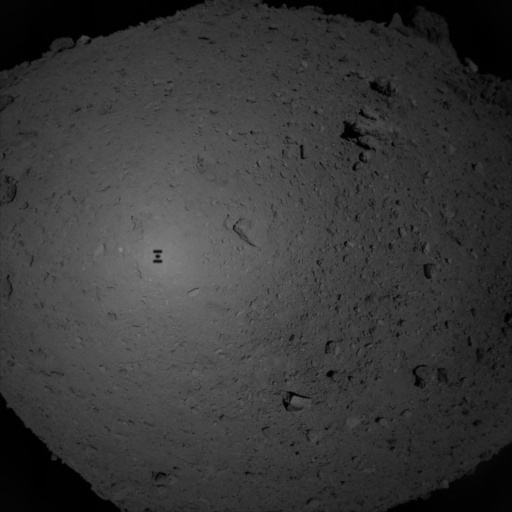Watch Live from Mission Control As Hayabusa2 Makes a Crater on an Asteroid

Most rocky bodies in the solar system bear the scars of past impacts, but only rarely can scientists watch those impacts occur in real time — and they're about to get just such a chance.
Japan's Hayabusa2 mission to the asteroid Ryugu arrived at its destination prepared to make that possible, through a maneuver called the Small Carry-on Impactor operation. That operation is scheduled to play out tonight (April 4 in the U.S., the morning of April 5 at the Japan Aerospace Exploration Agency, or JAXA, headquarters).
You can watch a live broadcast from mission control with English dubbing on Space.com, courtesy of JAXA, or directly through the agency's YouTube channel, beginning at 8:30 p.m. EDT (April 5, 0030 GMT).
Related: Asteroid Ryugu Is Surprisingly Dry, Japanese Spacecraft Finds
The operation is designed to help scientists better understand the asteroid's interior. Over the course of about 40 minutes, the Small Carry-on Impactor will separate from the main Hayabusa2 spacecraft, which will then hide itself away on the other side of the asteroid to protect itself from flying debris. Along the way, Hayabusa2 will release a camera that will watch the impact from about 0.6 miles (1 kilometer) away and send back a couple hours' worth of photographs.
Then, it's showtime. The impactor will approach the asteroid's surface, then deploy onboard explosives. The detonation will boost the impactor's speed to 1.2 miles (2 km) per second in a fraction of a second, creating a fresh crater on Ryugu.
The deployed camera will photograph that entire event, recording how debris flies away from the impact. That data will, in particular, help scientists understand Ryugu's structure, including how much empty space is inside the rock.
Breaking space news, the latest updates on rocket launches, skywatching events and more!
Once the dust settles, Hayabusa2 will creep out from behind Ryugu. And if all goes well, scientists are hoping they'll be able to bring the main spacecraft down to the surface near the fresh crater to get a close look at the newly formed feature — and maybe even grab a sample of nearby rock.
The Small Carry-on Impactor operation is one of Hayabusa2's last tasks at Ryugu: All that's left for the spacecraft is to deploy one more small rover, called MINERVA-II 2, which should take place late this summer. Then, it's time to head back to Earth, samples onboard.
- Diamond Asteroids: How Bennu and Ryugu Got Their Fancy Shapes
- Hop, Don't Roll: How the Tiny Japanese Rovers on Asteroid Ryugu Move
- Japanese Spacecraft Successfully Snags Sample of Asteroid Ryugu
Email Meghan Bartels at mbartels@space.com or follow her @meghanbartels. Follow us on Twitter @Spacedotcom and on Facebook.

Meghan is a senior writer at Space.com and has more than five years' experience as a science journalist based in New York City. She joined Space.com in July 2018, with previous writing published in outlets including Newsweek and Audubon. Meghan earned an MA in science journalism from New York University and a BA in classics from Georgetown University, and in her free time she enjoys reading and visiting museums. Follow her on Twitter at @meghanbartels.
